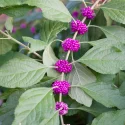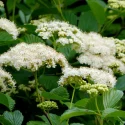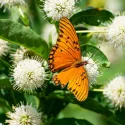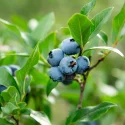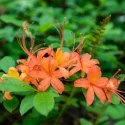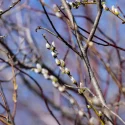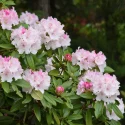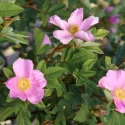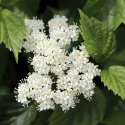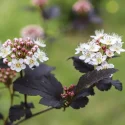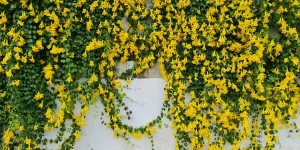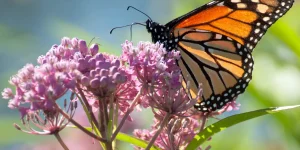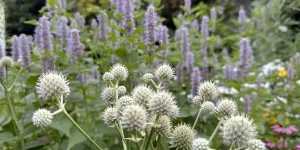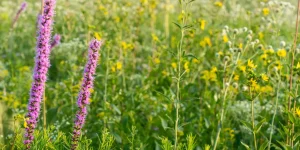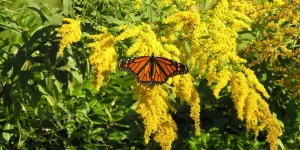Firebush
Native to Florida, Firebush blooms for months, attracting both birds and butterflies. Its bright red and orange tubular flowers can bloom year-round in warm climates and are a magnet for hummingbirds and butterflies. Firebushes like sun to part sun, have evergreen leaves, and can grow up to 15 feet tall and wide. Plant one (or a few!) and watch the pollinators have a party. Scroll on for planting tips.
- Full Sun, Part Sun
- Tall Shrub (11-15')
- Spring flowers
- Hummingbird favorite
Dig Deeper
Explore the history, types, and where to plant native Firebush
Table of Contents
Firebush (Hamelia patens) is famous for its bright clusters of tubular, red, or orange flowers that hang from glossy evergreen leaves. Its bright flowers are beloved by hummingbirds and butterflies.
Here are a few reasons to plant Firebush:
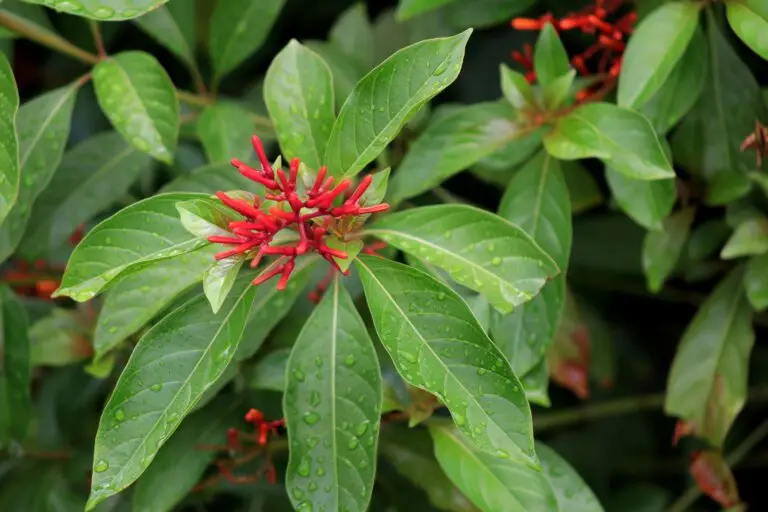
Evergreen leaves look great year-round
The glossy green leaves of a Firebush are evergreen. They can reach up to 15 feet tall and wide at their happiest.
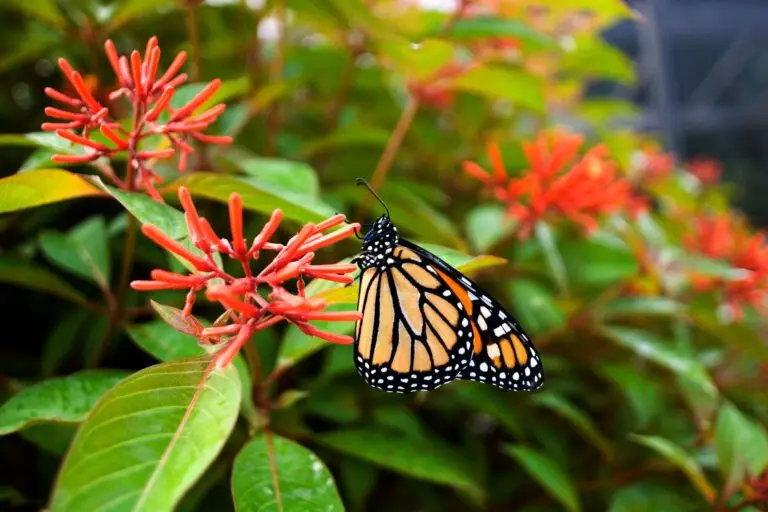
Butterflies love them
The bright red and orange flowers of a Firebush are magnets for butterflies looking for nectar, including monarchs.
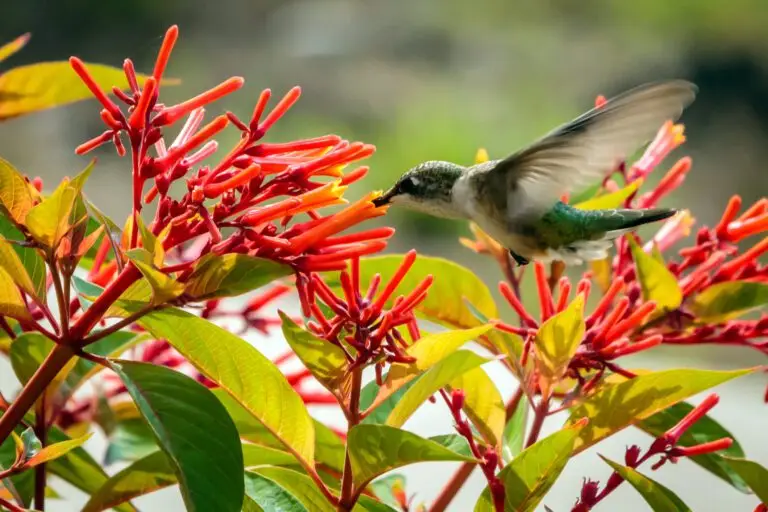
Hummingbirds love them
The bright red and orange flowers are also beloved by hummingbirds (notice how the flower shape is basically a perfect hummingbird cup?)
Where to plant Firebush
Firebush is an extremely easy plant to grow, as it tolerates a range of sun and soil conditions. Firebush thrives in full sun to partial shade and well-drained soil.
Firebushes are perfect for edges or hedges. Some inspiration for placement includes:
- Edges of yards
- Against houses and buildings
- As a privacy fence
How to plant Firebush
You can find Firebush plants in many different ways.
- Choose a location that receives full sun to partial shade and has well-draining soil.
- Dig a hole that is twice as wide as the root ball and just deep enough to accommodate the root ball at soil level.
- Remove the Firebush from its container and gently loosen any tangled roots.
- Place the Firebush in the hole, ensuring that the top of the root ball is level with the surrounding soil.
- Fill the hole with soil, gently tamping it down as you go to remove any air pockets.
- Water the Firebush thoroughly to settle the soil and hydrate the roots.
Propagate Firebush from cuttings
Firebush can be propagated from stem cuttings taken from adult plants. To propagate from cuttings:
- Cut 4-6 inch stem sections from the tips of the plant, making sure each cutting has several leaves and a stem that is at least ¼ inch in diameter.
- Dip the cut end of the stem into rooting hormone powder.
- Fill a container with a well-draining potting mix and insert the cuttings about 2 inches deep.
- Keep the cuttings moist and in bright, indirect light until roots have formed and new growth appears, which usually takes 4-8 weeks.
Where can I find Firebush plants?
Finding specific native plants can sometimes be challenging. Sadly, most conventional nurseries stock non-native plants.
To make finding Firebush easy, we’re put together four sourcing ideas to help:
Where can I find seeds and plants?
Finding native plants can be challenging (we partly blame Marie Antoinette.) To make it easier, we’ve assembled four sourcing ideas.
Native Nursery List
300+ native nurseries makes finding one a breeze
Online Native Plant Sellers
We've included 100+ online resources to help
Society Plant Sales
Every state has a native plant society; find yours
Online Communities
Local Facebook groups are a great plant source
What to plant with Firebush
Firebush look great alongside other native plants that also love the heat and weather of the south. Some favorites pairings include Azalea, Carolina Jessamine, American Beautyberry, and Passionflower Vine.
Firebush is a fantastic native shrub to grow in warmer climates of the south such as Florida, Alabama, and Louisiana. They love the heat of the south and can tolerate drought after being established. Plant a few today and watch your yard become a butterfly and hummingbird sanctuary.
Want more Southern garden inspiration? Here you go!






